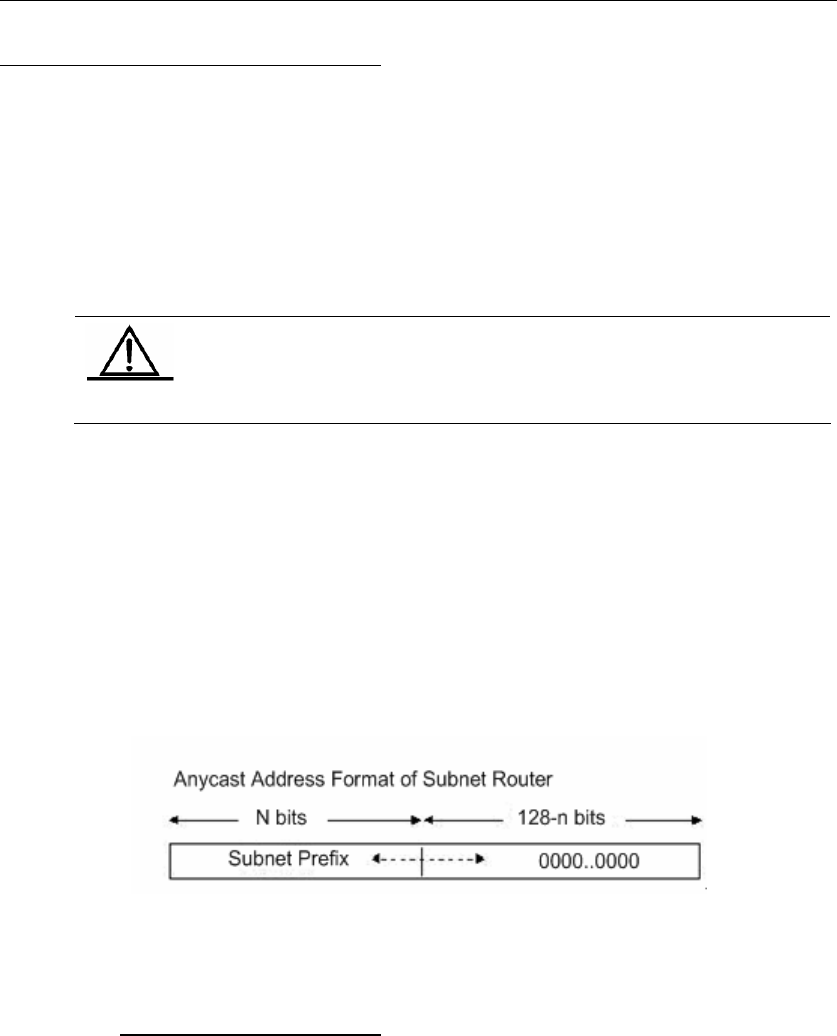
DES-7200 Configuration Guide Chapter 2 IPv6 Configuration
2-8
2.1.2.3 Anycast Addresses
The anycast address is similar with the multicast address as more than one node
shares an anycast address. The difference is that only one node expects to receive the
data packet of the anycast address, while all nodes of the multicast address members
expect to receive all packets sending to this address. The anycast address is assigned
to normal IPv6 unicast address space, so the anycast address cannot be differentiated
from the unicast address from the style. For this reason, each member of all anycast
addresses has to be configured explicitly to identify the anycast address.
Caution
The anycast address can only be assigned to the router, but cannot be
assigned to the host. Furthermore, the anycast address cannot be
taken as the source address of the message.
The RFC2373 predefines an anycast address, referred to as the anycast address of
the subnet router. The following diagram shows the anycast address format of the
subnet router, which consists of the subnet prefix followed by a series of 0s (as the
interface identifier).
Where, the subnet prefix identifies a specified link (subnet) and the packet to be sent to
the anycast address of the subnet router will be distributed to a router of this subnet.
The anycast address of the subnet router is usually used for some node which needs
to communicate with one router of the remote subnet.
2.1.3 IPv6 Packet
Header
Structure
The format of the IPv6 packet header is shown as the figure below:


















